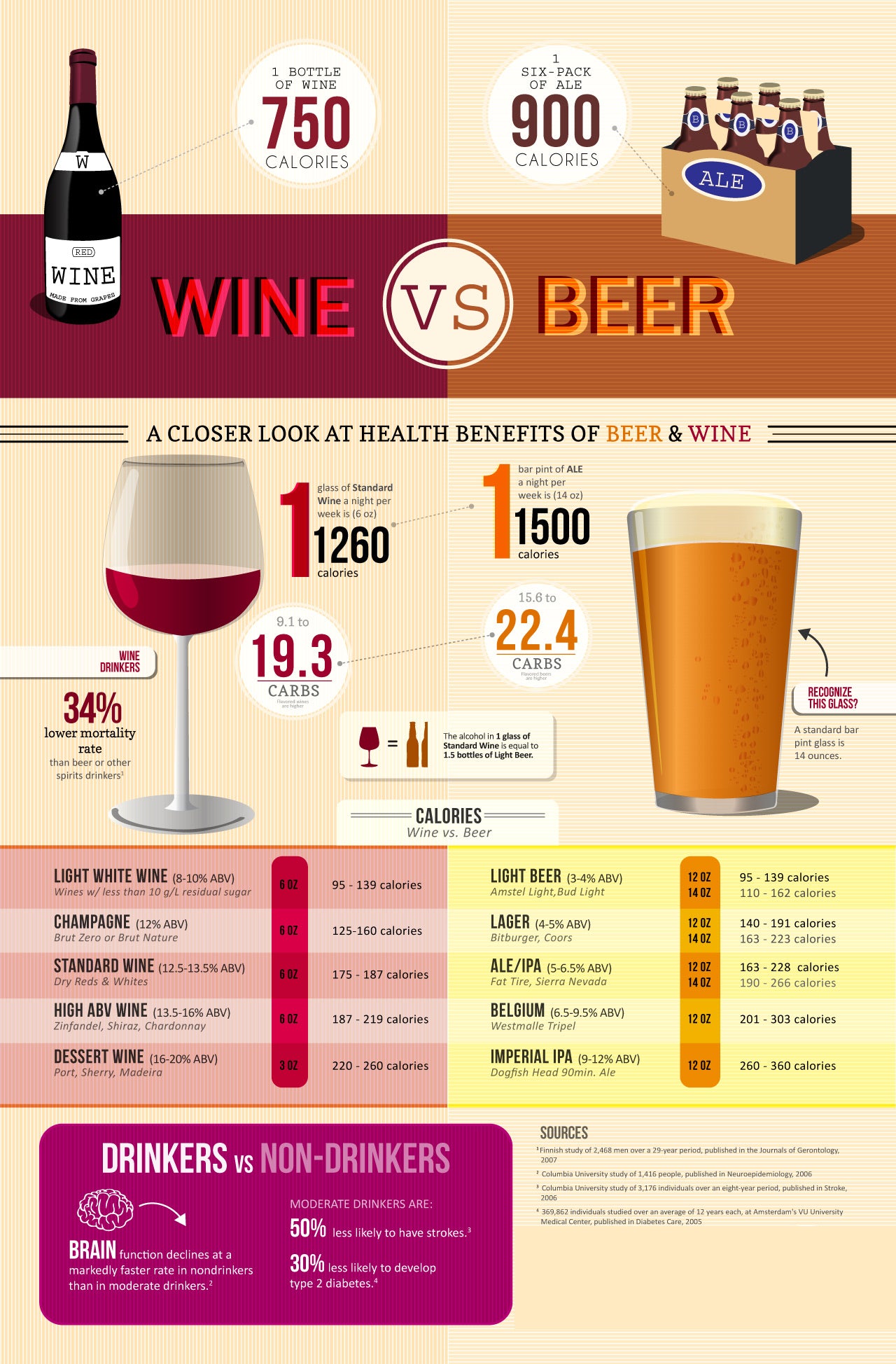Calories in Wine vs Beer
Since the FDA doesn’t require nutrition facts on alcoholic beverages it’s very difficult to understand how much a drink will cost your diet plan. This is a bummer because beverage companies manipulate their marketing messages to confuse people into thinking their alcoholic beverages are better than others. We don’t believe them and neither should you.
Every drink, whether it be beer, wine or liquor is some combination of alcohol calories, sugar calories and sometimes fat calories. Armed with some 3rd grade math and a list of conversions, one can easily determine calories in beer or wine and learn that a vodka-soda doesn’t have to be the only diet drink out there.
Health Benefits of Wine and Beer
Both beer and wine have some added benefits to drinkers that many distilled alcoholic beverages do not. For instance, red wine that is high in tannin contains procyanidins which protect against heart disease. Beer is a significant source of dietary silicon which improves bone density and reduces the risk of osteoporosis.
Not All Wines and Beers Have the Same Calories
Since some beer and wine have a higher alcohol percentage than others, the total calories will vary greatly. A good rule of thumb is to choose the lightest alcohol dry wine or beer in order to have the least calories. In the above graphic you can determine that IPAs have more calories than Lagers and wines with 15% ABV, such as a Napa Cabernet Sauvignon, have higher calories than say a German Kabinett Riesling.
Take a closer look at the health benefits of drinking, including the actual calories in wine vs beer. You will never look at a pint glass the same again.

